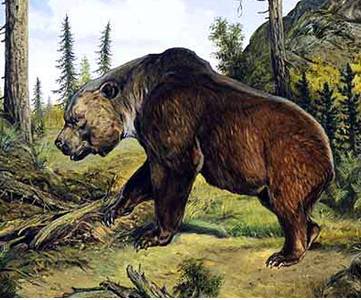Post by rock on May 13, 2019 18:32:49 GMT 5
barbary lion-panthera leo
Barbary lion zoological specimens range in colour from light to dark tawny. Male lion skins have short manes, light manes, dark manes or long manes.[11] Head-to-tail length of stuffed males in zoological collections varies from 2.35 to 2.8 m (7 ft 9 in to 9 ft 2 in), and of females around 2.5 m (8 ft 2 in). Skull size varied from 30.85 to 37.23 cm (12.15 to 14.66 in). Some manes extended over the shoulder and under the belly to the elbows. The mane hair was 8 to 22 cm (3.1 to 8.7 in) long.
The colour and size of lions' manes was long thought to be a sufficiently distinct morphological characteristic to accord a subspecific status to lion populations.[15] Mane development varies with age and between individuals from different regions, and is therefore not a sufficient characteristic for subspecific identification.[16] Barbary lions may have developed long-haired manes, because of lower temperatures in the Atlas Mountains than in other African regions, particularly in winter.[17] The size of manes is not regarded as evidence for Barbary lions' ancestry. Instead, results of mitochondrial DNA research support the genetic distinctness of Barbary lions in a unique haplotype found in museum specimens that is thought to be of Barbary lion descent. The presence of this haplotype is considered a reliable molecular marker to identify Barbary lions in captivity.[18] Results of a long-term study on lions in Serengeti National Park indicate that ambient temperature, nutrition and the level of testosterone influence the colour and size of lion manes
In historical accounts, the weight of wild males was indicated as 270 to 300 kg (600 to 660 lb). Yet, the accuracy of such data is questionable; the sample size of captive Barbary lions was too small to conclude whether it was the largest lion.The main animals they hunted in the Atlas Mountains were the Barbary stag and the gazelle. The lions also ate cows and sheep raised by people.

atlas bear
The Atlas Bear is believed to have fed at least partially on roots, acorns and nuts. Following the expansion of the Roman Empire in Northern Africa, thousands of bears were hunted for sport, used for execution of criminals, and killed during venatio games. The Atlas Bear is believed to have become extinct in the 1870s.The Atlas bear was said to have been 9 feet long and weighed up to 1,000 pounds (450 kg). It apparently fed on roots, acorns and nuts. The Atlas bear was said to have been mostly herbivorous, but since most bears today are omnivores, the Atlas bear is believed to have been able to eat meat as well.

Barbary lion zoological specimens range in colour from light to dark tawny. Male lion skins have short manes, light manes, dark manes or long manes.[11] Head-to-tail length of stuffed males in zoological collections varies from 2.35 to 2.8 m (7 ft 9 in to 9 ft 2 in), and of females around 2.5 m (8 ft 2 in). Skull size varied from 30.85 to 37.23 cm (12.15 to 14.66 in). Some manes extended over the shoulder and under the belly to the elbows. The mane hair was 8 to 22 cm (3.1 to 8.7 in) long.
The colour and size of lions' manes was long thought to be a sufficiently distinct morphological characteristic to accord a subspecific status to lion populations.[15] Mane development varies with age and between individuals from different regions, and is therefore not a sufficient characteristic for subspecific identification.[16] Barbary lions may have developed long-haired manes, because of lower temperatures in the Atlas Mountains than in other African regions, particularly in winter.[17] The size of manes is not regarded as evidence for Barbary lions' ancestry. Instead, results of mitochondrial DNA research support the genetic distinctness of Barbary lions in a unique haplotype found in museum specimens that is thought to be of Barbary lion descent. The presence of this haplotype is considered a reliable molecular marker to identify Barbary lions in captivity.[18] Results of a long-term study on lions in Serengeti National Park indicate that ambient temperature, nutrition and the level of testosterone influence the colour and size of lion manes
In historical accounts, the weight of wild males was indicated as 270 to 300 kg (600 to 660 lb). Yet, the accuracy of such data is questionable; the sample size of captive Barbary lions was too small to conclude whether it was the largest lion.The main animals they hunted in the Atlas Mountains were the Barbary stag and the gazelle. The lions also ate cows and sheep raised by people.

atlas bear
The Atlas Bear is believed to have fed at least partially on roots, acorns and nuts. Following the expansion of the Roman Empire in Northern Africa, thousands of bears were hunted for sport, used for execution of criminals, and killed during venatio games. The Atlas Bear is believed to have become extinct in the 1870s.The Atlas bear was said to have been 9 feet long and weighed up to 1,000 pounds (450 kg). It apparently fed on roots, acorns and nuts. The Atlas bear was said to have been mostly herbivorous, but since most bears today are omnivores, the Atlas bear is believed to have been able to eat meat as well.





